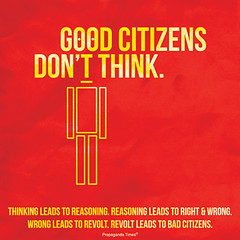This post originally ran on PR Breakfast Club, but I wanted to share with you in case you missed it over there.
Over the past few weeks, I have really been questioning what is wrong with PR people. Now, I am no journalist or and I’m not going on a rant about communicating with reporters. I am alarmed at two things: “the state of ME” and coverage.
The first is “the state of ME”. While social media is a really powerful tool  that all PR pros should know, lately it seems as if folks in the industry have had their vision clouded by social media. Instead of making the company or client the story, many flacks have made themselves an integral part of the story.
that all PR pros should know, lately it seems as if folks in the industry have had their vision clouded by social media. Instead of making the company or client the story, many flacks have made themselves an integral part of the story.
Sure, we could easily say that the Brian Solis’ and Peter Shankman’s of the world have fostered the appearance of PR pros turned media darling pundits, but that is just stupid. At the end of the day both Brian and Peter have busted their asses and I am pretty sure that when either worked on a client, they made sure that it was the client that got credit and didn’t try to make the success about them. They also made it possible for many to see PR as an important corporate cog. At the end of the day, as a PR pro, you took a selfless job to make others see their name in print, remember that. The C-suite signing your checks surely will.
My second beef with the PR industry is what folks are calling coverage nowadays. In a few recent online chats, I have seen people note that pay-to-play coverage opportunities and Tweets from agency or company representatives qualify as coverage.
When you look at a paid piece of editorial, it is nothing more than an ad and should be handled by an advertising department. By going this route as a PR person, you lose the credibility of earning media. These paid opportunities also cloud your measurements as they are often looked at as needing to bring in a positive return on the money spent on placing them.
Counting agency and company Tweets as coverage is also as foolish. The main reason for this is that no matter what the audience or Klout score of a flack in this situation, the Tweet is worthless unless it causes an action. For example if you do fashion PR and your friends and network are all into NASCAR and hunting, what good does a Tweet announcing Coach’s new line of hand bags? Sure adding a couple thousand impressions on paper may look awesome, but if they aren’t leading to someone checking out the release or purchasing, then you are just padding stats for the sake of padding.
I could go on and on about either of these topics, but I won’t. I want to hear what you think about this. Am I way off base, or is this something that gets at your craw as well?
Image – PropagandaTimes
